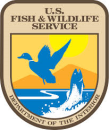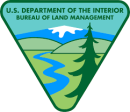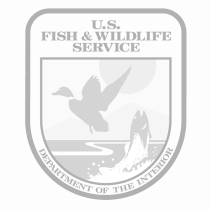Location
States
CaliforniaEcosystem
DesertIntroduction
Monarch butterflies (Danaus plexippus) are a candidate species for listing under the Endangered Species Act. In North America, monarchs migrate to overwintering sites in central Mexico and the Pacific Coast because they cannot survive freezing temperatures in other parts of their range. Saline Valley, California is a desert riparian riparian
Definition of riparian habitat or riparian areas.
Learn more about riparian site in the northern Mojave Desert, and is one of the few inland overwintering sites for monarchs that we currently know about.
The monarch counts in Saline Valley, initiated by Derham Giuliani in 1976, are one of the longest running datasets for overwintering monarchs in California. In some years, over 1,000 monarchs used the site for overwintering. This is unusual for inland sites, which usually host ten or fewer monarchs. U.S. Fish and Wildlife Service (USFWS) biologists visited the site in December 2016 and observed over 50 monarchs, but did not conduct an official survey. In response to this discovery, USFWS biologists established the Saline Valley Monarch Count in 2017. The Saline Valley Monarch Count (SVMC) is a citizen science effort formed to continue monitoring the monarch population at this unique overwintering site. Their work provides insights about monarch migration that will lead to a greater understanding of monarch population and migration dynamics.
Key Issues Addressed
Western monarch populations have declined ~99.4% since the 1980s. These declines are due to losses of breeding habitat, changes in the timing of plant flowering due to climate change climate change
Climate change includes both global warming driven by human-induced emissions of greenhouse gases and the resulting large-scale shifts in weather patterns. Though there have been previous periods of climatic change, since the mid-20th century humans have had an unprecedented impact on Earth's climate system and caused change on a global scale.
Learn more about climate change , and insecticide use in agriculture. Losses in overwintering habitat, while not the largest threat to Western monarchs, still contribute to this population decline, as these monarchs must survive the winter to return to warmer areas of their range to breed in the spring. Accurately assessing monarch populations is critical to informing additional efforts that support remaining western monarch butterflies.
The migration patterns of the monarchs in Saline Valley are poorly understood, especially where the monarchs migrate after they leave the valley. Saline Valley is an unusual site for monarchs to use as overwintering habitat because it is a desert environment that is less humid, experiences larger temperature fluctuations, and hosts a significantly different plant community than coastal sites. Nevertheless, over 1,000 monarchs have been recorded in Saline Valley in a single season, making it a noteworthy overwintering site. However, since the Saline Valley Monarch Count began in 2017, the monarchs in Saline Valley have disappeared in late December for unknown reasons. It is important to determine why the monarchs use Saline Valley and where they migrate to in order to better understand the population dynamics of this declining candidate species.
The large size and remote location of Saline Valley makes surveying challenging. The five canyons in Saline Valley used as overwintering habitat are four hours from the nearest town. Given the rugged terrain, these canyons cannot be surveyed by one team in a single day. Additionally, the surveys must be conducted before temperatures reach 55°F because monarchs begin flying above this temperature, leading to inaccurate counts. Surveyors camp overnight and hike into the canyon early in the morning in order to count the monarchs before sunrise, when temperatures rapidly rise. Due to these conditions, a large group of volunteer surveyors with backcountry experience is required to provide an accurate survey of Saline Valley monarchs.
Project Goals
- Quantify monarch butterfly populations in Saline Valley and record when they arrive and leave to better understand monarch migration patterns
- Gather information about Saline Valley to determine why it is used as a monarch overwintering site
- Recruit and train volunteer citizen scientists with backcountry experience to count and tag monarchs
Project Highlights
- Weekly Surveys Improve Monitoring: Conducting smaller weekly counts provides more information about how and why monarch populations in Saline Valley change over the course of the overwintering season. Volunteers form smaller groups that conduct weekly counts in three canyons in the valley. Five to nine surveys are conducted during the surveying season, from October through January.
- Improved Understanding of Monarch Behavior: In addition to counting and tagging monarchs, volunteers observe monarch behavior in the canyons, particularly vegetation use. Information gathered by Saline Valley Monarch Count volunteers indicates that monarchs will roost on canyon walls and in cottonwood (Populus fremontii), willow (Salix spp.), creosote (Larrea tridentata), and mesquite (Prosopis pubescens) trees. Volunteer observations also revealed that monarchs use mule fat (Baccharis salicifolia) as a nectar source and are attracted to the riparian areas in Saline Valley.
- Recruiting Volunteer Surveyors: In the first year, the Saline Valley Monarch Count coordinators spent considerable time and resources on recruiting citizen science volunteers to count and tag monarchs. The coordinators gave presentations to local nonprofits, such as the Friends of the Inyo and the Sierra Club, as well as federal and state agencies and local tribes. Coordinators also published articles in local newspapers to promote the counts and made flyers that were posted in outdoor stores around Bishop, California. The first year of surveying attracted 34 citizen scientists. Now, a majority of surveyors come back for multiple years, and new volunteers now join the project through word of mouth. There were 31 volunteers in 2018, down to 13 in 2019 due to severe winter weather that prevented access to the site, and 21 in 2020. Over the course of four years, 62 unique volunteers contributed to the counts.
Lessons Learned
Creating Community: The SVMC has a strong community of returning volunteers. The sense of community, unique experience, and opportunity to contribute towards a larger goal all contribute to the high volunteer return rate.
The number of overwintering monarchs documented in Saline followed similar patterns of decline as coastal overwintering sites over the last 4 years. Although there were two counts of over 1,000 monarchs since Giuliani began counting in 1976, volunteers only recorded 145 monarchs in 2017 and 26 in 2020. However, monarch use of the Saline Valley as an overwintering site demonstrates that monarchs are not limited to coastal overwintering sites. The riparian stretches of Saline Valley provide the monarchs with the food and shelter necessary for survival. Weekly surveys revealed that mule fat goes to seed in late December, which coincides with the disappearance of the monarchs. After the monarchs disappeared, volunteers found no monarch bodies, suggesting that the monarchs leave the site. However, their destination is still unknown.
Without a large group of volunteer surveyors, collecting monarch counts across this large geographical and temporal scale would be difficult. The Saline Valley Monarch Count found success by conducting a majority of volunteer recruitment and training in the first year. During the first year, all of the volunteers were trained on-site on the day of the survey. Now, new volunteers learn how to survey through online materials and by surveying with experienced volunteers. By recruiting and training many volunteers in the first year, subsequent training and recruitment is less labor intensive.
The Saline Valley Monarch Count has a strong community of volunteers, which encourages volunteers to return to the project for multiple years. Once a year, a larger group conducts a survey in order to train new volunteer surveyors and foster a sense of community between the volunteers. The number of volunteers conducting counts has remained fairly constant from 2018 to present apart from 2019 when surveys were cancelled due to snow. The key to creating a strong volunteer community was to give volunteers ways to easily connect with other volunteers and coordinators, provide a unique experience, and create accessible training and resources online.
Next Steps
- Continue surveying Saline Valley monarch populations.
- Search for more inland overwintering sites like Saline Valley: potential sites include areas near Yuma, Arizona, along the Colorado river, and other low desert riparian areas. Refuge staff at Bill Williams and Havasu have been trained and are contributing to this search.
- Determine where the monarchs in Saline Valley migrate in late December.
- Publish the dataset detailing monarch populations in Saline Valley from 1976-2008 to make the information more widely available.
Funding Partners
None, volunteer based
Resources
Saline Valley Monarch Count Website
Contacts
- Rachel Williams, Species Assessment Team Project Manager, USFWS, and Inyo County Regional Coordinator for Xerces Society Western Monarch Count: salinemonarchcount@gmail.com
- Joanna Gilkeson, Superior National Forest Public Affairs Specialist, U.S. Forest Service, and Inyo County Regional Coordinator for Xerces Society Western Monarch Count: joanna.gilkeson@usda.gov
CART Lead Author
Robin Bradley, CCAST Student Writer, University of Arizona: robinbradley@arizona.edu
Suggested Citation
Bradley, R., and Léger, A. (2021). “Citizen Science for Monarch Monitoring in the Saline Valley, California.” CCAST. Retrieved from https://www.fws.gov/project/citizen-science-monarch-monitoring.








